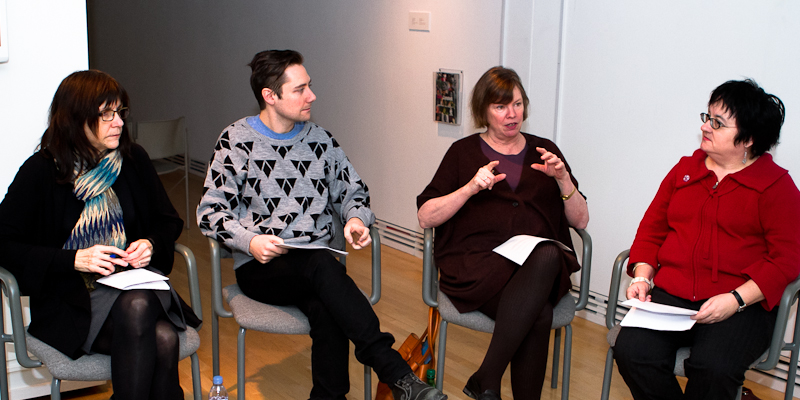
Friends, colleagues, acquaintances and followers congregated at the Carleton University Art Gallery (CUAG) Jan. 14 to honour the memory of late Canadian film pioneer Colin Campbell with a casual discussion panel.
The crisp and contemporary touring exhibition was curated by Toronto-based John Davies, a writer who most recently published a book on Warhol superstar John Morrissey’s 1970 film, Trash.
The exhibition, aptly named “People Like Us: The Gossip of Colin Campbell,” channeled different characters from 1972-2000 in various stages of storytelling and weaving webs of acquaintance with various eccentric characters, which Davies calls “talking heads.”
Elements of the quintessential avant-garde, anti-film movement of 1960s New York were conveyed through a series of monitors which played Campbell’s pre-eminent films, created through early video cassette tapes.
The films led to a homegrown movement in Canada which became known as “The Toronto Look,” said Peggy McCann, an independent writer and curator who has done work for TVO.
This aesthetic was not based on drama, but on storytelling and a compelling narrative.
Among them were Sackville, I’m Yours, (1972), based on his first teaching position at Mount Allison University in Sackville, N.B.
Campbell was a dignitary in the LGBT community due to his bisexuality and lack of gender conformity, which he portrayed through female alter-egos on film.
His ex-partner, Lisa Steele, reminisced about their life in Los Angeles and their adventures in the desert writing together and pursuing photography.
“We both wrote a lot,” Steele said. “The fun part was the dress up, and the work part was the writing, but we enjoyed it. We would drive out to the desert and do different things. We’d be in each other’s tapes. We’d hear something at a party and read something in a newspaper, and it would make itself in our work.”
“It was a union of art and life,” she added.
As a former professor at the University of Toronto and the Ontario College of Art and Design in Toronto, Steele said everyone knew when Campbell didn’t like a student’s work — he just wouldn’t say anything.
With a fond, nostalgic smile, Steele said the students and faculty still loved him dearly. He also had many stalkers, not only in California, but in Europe, too.
“When we were living in LA, we got a series of phone calls from a woman, and they’d come in the middle of the night,” Steele admitted with a wistful smile. “We were [almost] sure of who it was, but that was quite interesting. He has his ‘people’ who would become obsessed with him.”
“He was someone you could become obsessed with.”
Fiona Wright, the CUAG’s outreach co-ordinator, said the Carleton community has been receptive to the show.
“It’s given me the opportunity to collaborate on projects with the GLBTQ centre on campus, and with art history and theory of architecture students,” Wright said.





